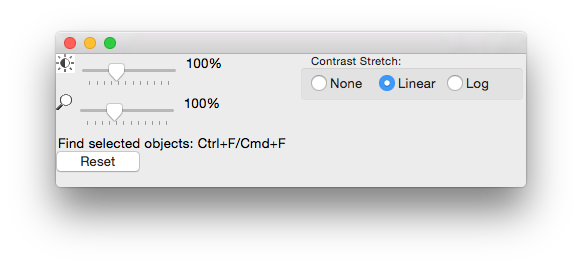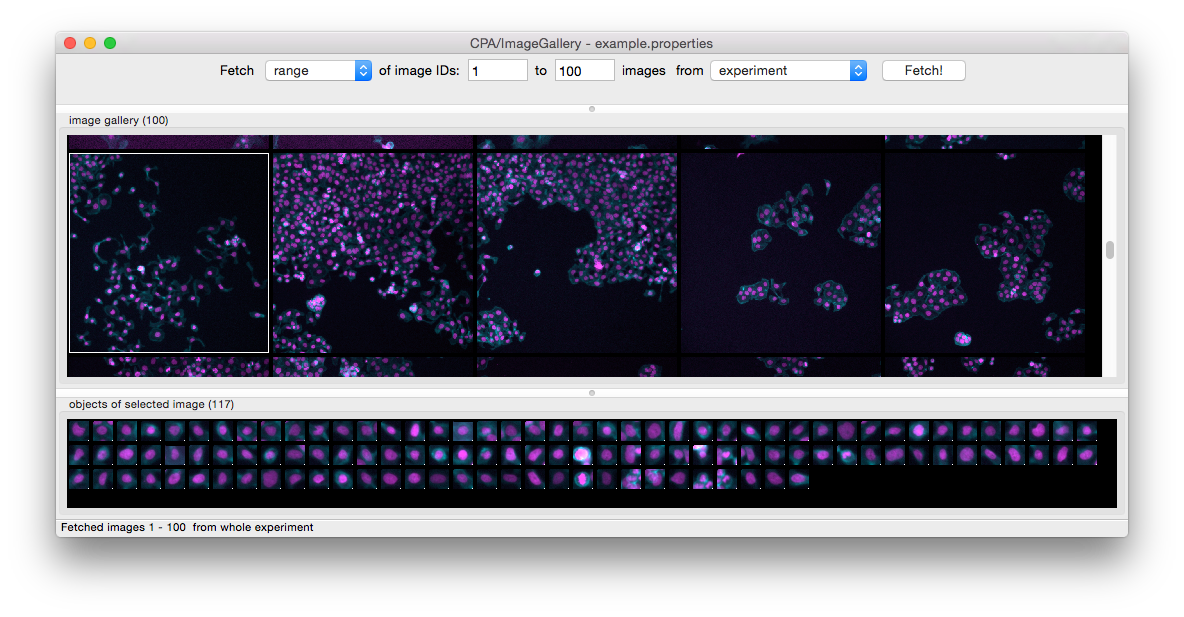

- #Download cellprofiler analyst how to
- #Download cellprofiler analyst full
- #Download cellprofiler analyst software
- #Download cellprofiler analyst Pc
- #Download cellprofiler analyst series
Any line preceded by # will be ignored by CellProfiler Analyst, which can be used to disable unwanted options or leave yourself notes or comments. properties file can be opened in any text editor.
#Download cellprofiler analyst full
properties file to have it use the database we made from the full results database, which we made in Step 1. properties file it produces.ĮxportToDatabase settings for generating a. You should also disable any other Export/SaveImage modules to avoid overwriting results from your original run. At the end of your pipeline, add an “ ExportToDatabase” module and enable the option to generate a. We won’t be using the results data from this run so which set of images is not important, what matters is that we can run the pipeline workflow from start to end. Open up the CellProfiler pipeline you previously used to perform the analysis, then remove all but a single set of images. properties file for us to use with our database. While we don’t want to run the entire analysis again, we can instead construct a pipeline using just a single image set and run that with the ExportToDatabase module to generate a. Option 1 – Have CellProfiler do most of it for you There are two ways we can create this file. properties file to tell it where the database is and which images, objects and settings you’d like to use with that database. properties fileĪlongside the database, CellProfiler Analyst also needs a.
#Download cellprofiler analyst software
This software can also be useful for viewing your database tables, which can be done by clicking the “ Browse Data” tab. We’ve now finished with DBBrowser for now. Press “ File - Write Changes” to save the database. If that’s been done correctly, you should now be able to see all the imported tables within your new database. If there are large numbers of subfolders to combine, you may want to try using concatenating files with csvstack before importing, or generating the database with cytominer-database. Nuclei.csv from experiment 1 and experiment 2). Entering the same “ Table name” when importing additional sheets will allow you to merge datasets together, which may be useful when combining multiple runs (e.g. If you’ve exported spreadsheets to multiple subfolders, you can repeat the import sequence for the contents of each folder. Select, name and then import the remaining sheets to complete the database. That sheet will be added to the database and removed from the list, but the importer will remain open until we’ve finished with all the sheets we’re opening. To do this, uncheck all but one of the input sheets (you can click on it to get a preview in the bottom half of the window), enter a name for the table at the top of the window and hit OK. The settings will largely be automatic if we’re using CSV files, but importantly we need to import the selected sheets individually as separate tables.

You should then see the screen below, which will allow you to configure the import. In the resulting popup, navigate to and select all the spreadsheets that we need to import. In the top menu hit “ File - Import - Table from CSV file…” To turn our spreadsheets into tables we need to import them. Since we’re going to be importing our tables we can just hit “ Cancel” to return to the main screen. Once that’s done you’ll be asked to start defining a table. Select this and provide a destination for your new database (.db) file. If we open DB Browser, we should see a “ New database” button in the top left. This free program provides all the tools we’ll need to turn.
#Download cellprofiler analyst Pc
To create a database, on either Mac or PC we recommend installing DB Browser for SQLite from. For this workflow we’ll be using SQLite databases, since these are easy to work with and don’t require a server.
#Download cellprofiler analyst series
Because of this we can generate a database from a series of spreadsheets. Step 1: Creating a database from output spreadsheetsĪ database file is largely just a series of tables. properties file with which to load it into CellProfiler Analyst.
#Download cellprofiler analyst how to
This blog post will cover how to convert a spreadsheet into a database and make a usable. Fortunately, you don’t need to re-run the entire experiment to get your data into CellProfiler Analyst. properties file explaining what to do with that database. We’ve all done this before – CellProfiler Analyst needs a database file, but your CellProfiler pipeline that took days to run was set up to export spreadsheets.


 0 kommentar(er)
0 kommentar(er)
